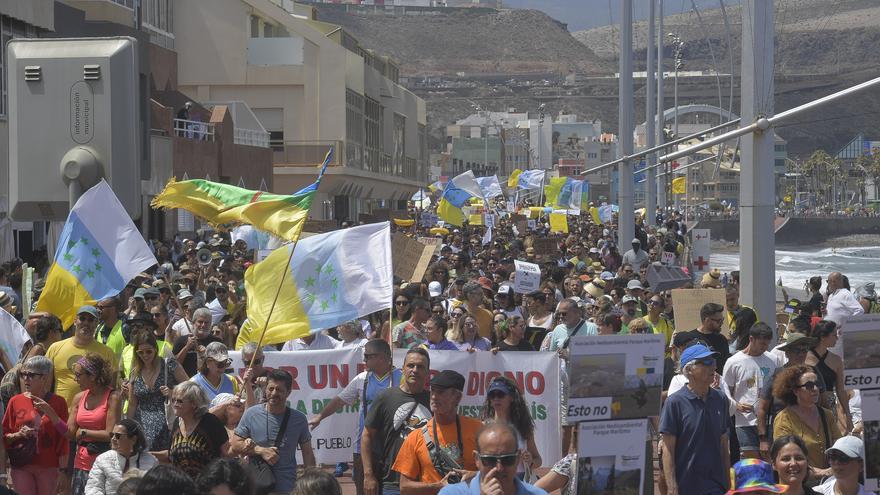
Before noon on Saturday, the demonstration in Tenerife was already historic, according to the objective and impartial judgment of the protesters. At that time, a few minutes before midday, I approached the protest and speaking with several dispersed friends, we made an estimate: between 15,000 and 16,000 people, although many more people were still arriving at that moment. I posted it on X and was appropriately insulted. An hour and a half later, the drizzle of insults and denigrations continued. People couldn’t care less that the tweet had been posted an hour and a half earlier. Shortly after, the videos arrived. So many people! Nothing like it had ever been seen before! I sighed deeply. The cameras came and went. It’s useless to point out – as always in these gatherings – that this is a city of short and narrow streets. A tiny city of 220,000 inhabitants. The longest and widest we have are the boulevards, and the boulevards are not the Champs-Elysées. They don’t care. They film the modest crowd on a street sixty meters long and fifty meters wide over and over again. But what an immense crowd. By two o’clock, I could only doubt 80,000 protesters, those who were on Ashotel’s payroll. Later, some insisted that there were 100,000 people protesting. In short, two or three people can fit in a square meter with some difficulty. Just 600 are enough to cover Weyler Square, for example. Another X correspondent noted this. The total route of the demonstration was about 1,700 meters, and the average width of the affected streets is nine meters. 1,700 x 9 = 15,300 square meters. At two people per square meter, that’s 30,600. At three people per square meter, 45,900. And that’s the range of protesters last Saturday in Santa Cruz, Tenerife: between about 30,600 and 45,900.
Protests instantly create their fundamentalists. They are, in principle, pure souls with a mathematical spirit. A successful demonstration – and Saturday’s was in Tenerife, and to a lesser extent, also in Gran Canaria – must be almost infinite, as a radio announcer chirped all afternoon. A successful protest is also an unpostponable faith. If we are so many, it’s because we are right, and because we are right, that’s why there are so many of us here. Isn’t that clear, undesirables? A protest is also a way to express weariness, but not to release it, to exalt hope, but not to govern it. Protests always aim to be – and are experienced as – performative statements, meaning that by expressing an objective, a longing, a desire, ultimately by merely expressing a fact, the fact is accomplished. In Saturday’s demonstrations, a quiet disdain towards the political elites and against the partyocracy was exercised. Distrust generated by the major political organizations is complete, conclusive, flawless. They don’t want to negotiate. They don’t see the need for interlocutors. Just do what we ask and that’s it. And do it sooner rather than later.
[–>
The major parties, and especially the regional government, have a serious problem. These protests do not end in themselves. The organizers are preparing an extensive program of events and interventions for the coming months, leading up to another major demonstration in the autumn. The success of the weekend reasonably fuels their enthusiasm. This is not the protest in Vilaflor in 2002: a burst of protest quickly extinguished. The statement on Saturday from CC was disappointing. The protesters were not endorsing the Coalition’s management: that is childish, nauseating, pointless. Multitudinous protests – with broad participation of teachers, scientists, and technologists – are not organized to defend a government with a solid parliamentary majority, but to criticize it with the utmost force in the streets. This discontent is deep, widespread, contentious and goes back a long way. They are fed up with the crisis not being just a difficult situation, but the governing style for too many years. Initiating a dialogue is essential.
Subscribe to continue reading
















